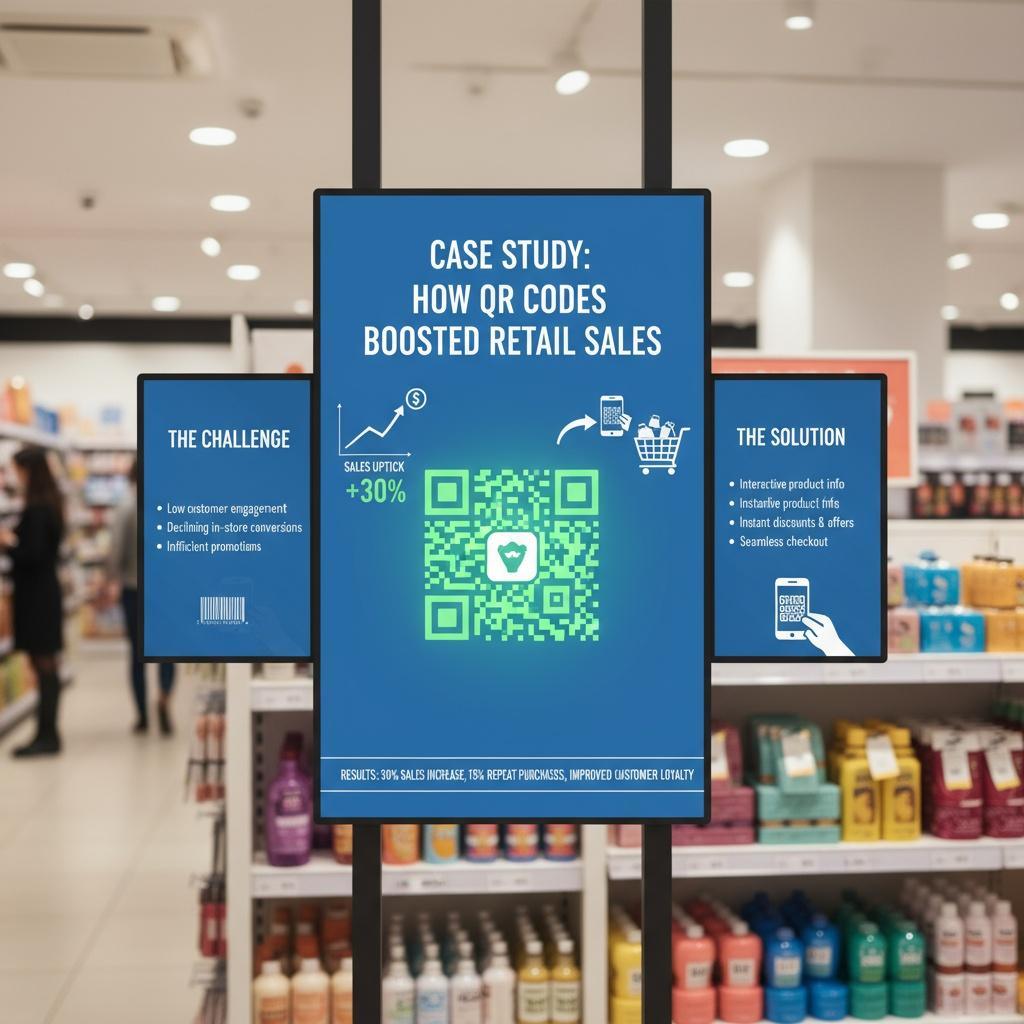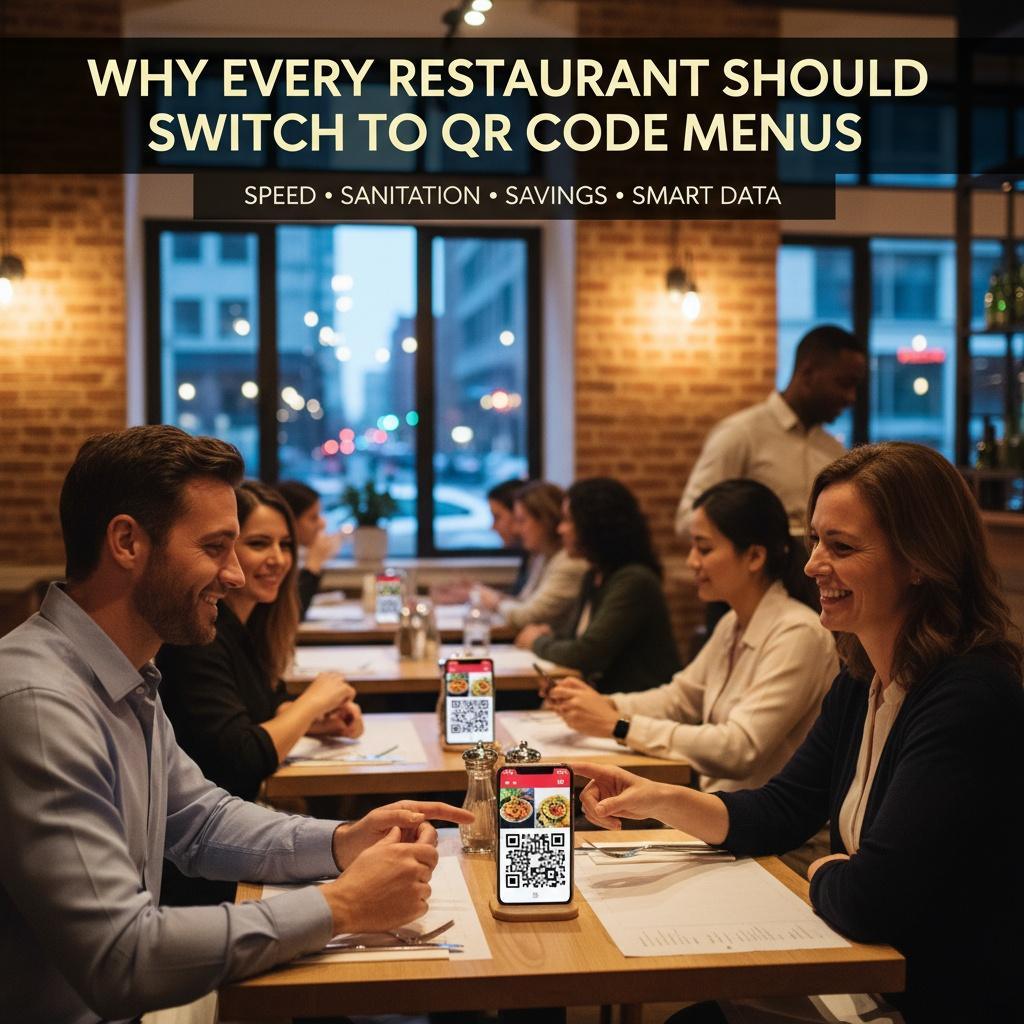

QR code menus have moved from pandemic stopgap to permanent profit levers. For operators navigating thin margins, labor volatility, and shifting guest expectations, QR codes in business are pragmatic digital transformation tools that reduce friction at every step of service. Unlike static, printed menus, digital menus update in seconds, sync with inventory, surface specials automatically, and feed clean data into analytics. The result: faster decision-making, better merchandising, lower menu reprint costs, and a platform for modern marketing strategies that build first-party relationships—without bloating your tech stack.
Speed is money in hospitality. QR code menus put the full experience in guests’ hands the moment they’re seated, shrinking time-to-browse and time-to-order, which improves throughput during peak periods. Operators using smart menu QR codes in hospitality report smoother pacing, fewer bottlenecks at the server, and more opportunities for seamless upsells. In a high-volume environment, shaving minutes from each turn materially impacts nightly revenue, while guests perceive service as faster and more convenient.
Paper menus age the instant ink dries. By contrast, QR code menus eliminate reprint cycles and give managers real-time control—86 an item across all tables in seconds, raise or lower prices in response to food costs, and maintain seasonal design without paying a designer. For operators planning a contactless front-of-house, a comprehensive guide to contactless dining highlights how digital menus reduce touches, streamline ordering, and complement POS workflows. Over time, this agility compounds into measurable savings and a more resilient operation.
QR code menus are also powerful customer experience hubs. They embed photography, dietary filters, and allergen details; support translations; and can personalize suggestions based on time of day or party size. When connected to your CRM and loyalty stack, they unlock modern marketing strategies like bounce-back offers, timed promotions, and segmented campaigns. As data-driven decisions in restaurants become a competitive baseline, digital menus are the cleanest, most consent-forward way to collect actionable insights without degrading guest experience.
What sells best on rainy Tuesday lunches? Do framed combos outperform à la carte? With a digital menu, operators can test headline copy, photography, and layout in real time—then roll winners across locations. This is menu engineering with a feedback loop: tie contribution margin to placement, promote high-margin add-ons, and surface inventory you need to move. These micro-optimizations are classic QR codes in business use cases: small, evidence-based changes that add up to significant weekly impact.
Good hospitality meets guests where they are. QR code menus scale fonts for readability, support screen readers, and offer multilingual views with a tap, making accessibility a standard, not an add-on. Rich media—chef notes, sourcing stories, short prep videos—turns the menu into a brand stage without cluttering the physical table. Done well, these digital transformation tools elevate perceived quality, reduce ordering anxiety, and boost confidence for guests with dietary needs.
As with any digital touchpoint, governance matters. Use your own domain (not obscure URL shorteners), publish a clear privacy notice, and restrict third-party trackers. Educate staff to spot tampered stickers and rotate QR assets as needed. It’s wise to review known QR menu privacy and cybersecurity risks and adopt simple safeguards: HTTPS everywhere, role-based access, and POS-integrated ordering to reduce manual data handling. Operationally, keep a small run of printed menus for edge cases and ADA compliance, but direct the majority of traffic to your digital experience.
Switching to QR code menus isn’t just about going paperless—it’s about building an adaptable, insight-rich guest journey that increases revenue, trims costs, and fuels continuous improvement. Start small: digitize the menu, connect it to inventory, and standardize the visual hierarchy. Then layer on analytics, targeted offers, and A/B tests that align with your brand. Backed by industry playbooks on QR-enabled efficiency and smart hospitality practices, restaurants that make this shift now will set the pace on convenience, personalization, and profit in the years ahead.